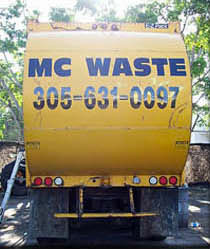south miami garbage and parks
February 16, 2013When Christopher J. Canidate was a kid growing up in South Miami, he and his friends would sneak into private pools on the other side of South Dixie Highway, because there was no place to swim in their neighborhood.
Now he’d like to see South Miami make good on decades-old promises to build a public pool in his formerly segregated section of town, so he can take his three kids swimming. But the way he sees it, the city can’t seem to get its act together.
“That’s crazy. This neighborhood really needs a pool,” said Canidate, 26. “We’re not like the other side of U.S. 1. We don’t have pools, so the kids go and sneak in other pools. You see them doing the same thing I used to do.”
Since the 1970s, African-American leaders in South Miami have been fighting for a pool. A few years ago, Miami-Dade County agreed to provide nearly $1.4 million to pay for the project, but city leaders’ delays while bickering over the design of the project and the maintenance cost very nearly led the county to yank the grant.
On Friday, after meeting with South Miami Mayor Phil Stoddard a few days earlier, County Mayor Carlos Gimenez’s office said it would hold off on taking away the grant, thereby giving the city more time to settle on a plan.
“We are going to grant them an extension on it,” said Vanessa Santana-Peñate, a spokeswoman for Mayor Gimenez. “In regards to how long, it may be six months or it may be longer than that. It hasn’t been determined.”
Since the neighborhood around Murray Park, 5800 SW 66 St., first asked for the pool, the city has lost thousands of dollars for failure to meet deadlines for the project. City commissioners have rejected several designs. Several contractors quit, and some commissioners questioned whether they city could afford to pay the pool’s annual operating costs, most recently estimated at $50,000. After the city failed to meet a December deadline, the county threatened to withdraw the grant.
The city already has spent about $200,000 on a design that won’t be used. Now the city is moving to hire a design-build contractor, and — for a fourth time — to try to make a deal with a construction company.
Community leaders have said that not having a pool endangers the lives of the children in the neighborhood, which has been predominantly African-American since the 1920s.
According to the National Institutes of Health about 1,500 children drown each year in the United States. The rates were higher in African Americans than whites. Researchers have cited the lack of availability of swimming lessons as one of the reasons for the racial disparity.
The county agreed that the city could use $100,000 from the city’s Community Redevelopment Agency to cover its share of the pool’s design and construction costs. CRA money must be used to benefit that area of the city.
Nevertheless, Vice Mayor Josh Liebmand and Commissioner Valerie Newman have been wary of the project, in part because, even with the county construction money, the city would still have to pay the operating costs. Based on the current estimates, the pool would lead to a roughly 10 percent increase in the parks department’s budget.
But Rodney Williams, the owner of a barbershop near the park, said he was relieved when he found out Stoddard and Gimenez had reached a deal for the sake of the safety of the children.
Like Canidate, Williams remembers his summertime adventures as a teen sneaking into private pools.
“We would go in our bicycles, and sneak in. They would call police, and off we went, running so we wouldn’t get caught,” Williams, 40, said. “No one ever got arrested for it, but it’s crazy that all these years have passed and we still don’t have the pool.”
-
Read more here: http://www.miamiherald.com/2013/02/15/3237227/public-pool-battle-continues-in.html#storylink=cpy


Leave a Reply